You seem annoyed, but to me, it looks like they were cleaning up for you.
You have trained them well, sir ant whisperer.
Edited by drtrmiller, January 9 2015 - 11:39 PM.

You seem annoyed, but to me, it looks like they were cleaning up for you.
You have trained them well, sir ant whisperer.
Edited by drtrmiller, January 9 2015 - 11:39 PM.
Easy clean up. ![]()
![]()
The good man is the friend of all living things. - Gandhi
Are those all dead ants they put in there?
Some of it is dead ants.
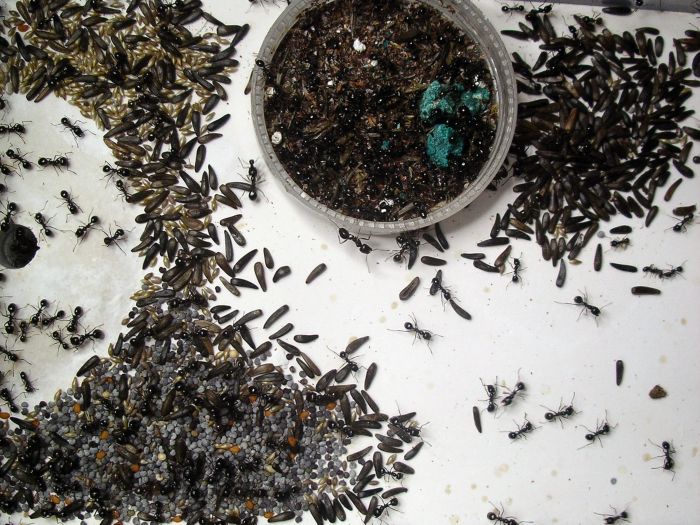
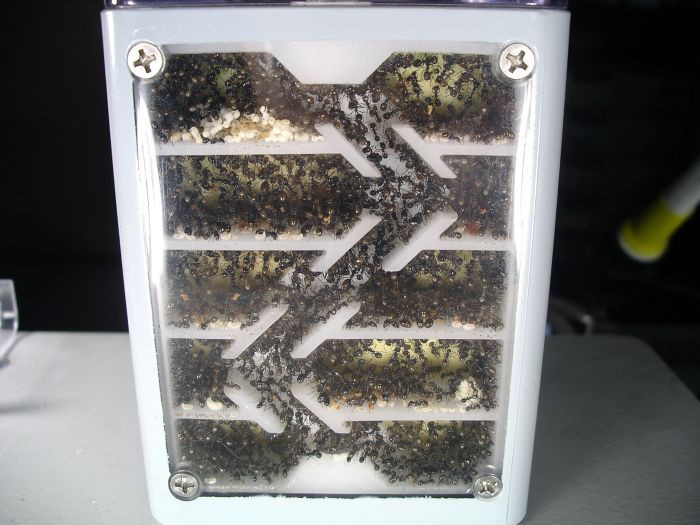
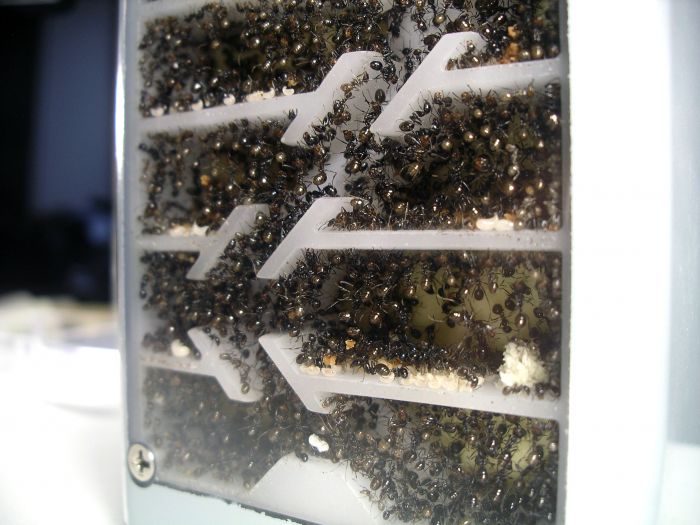
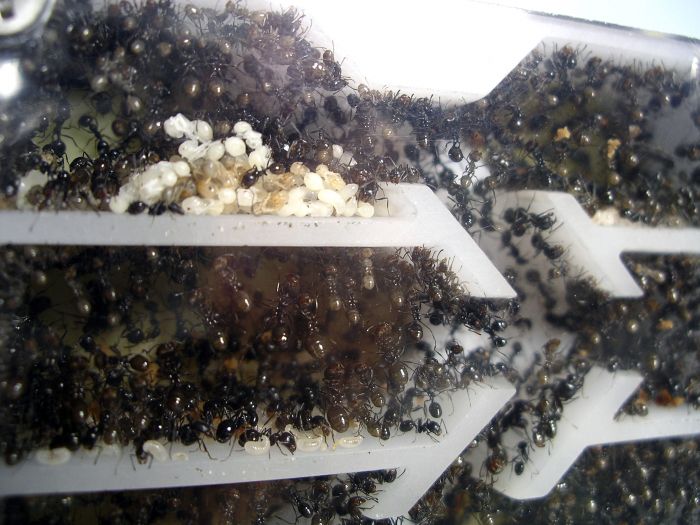
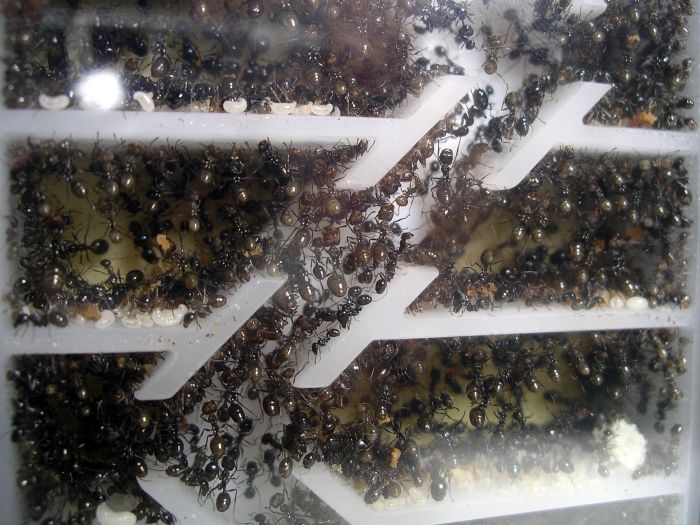
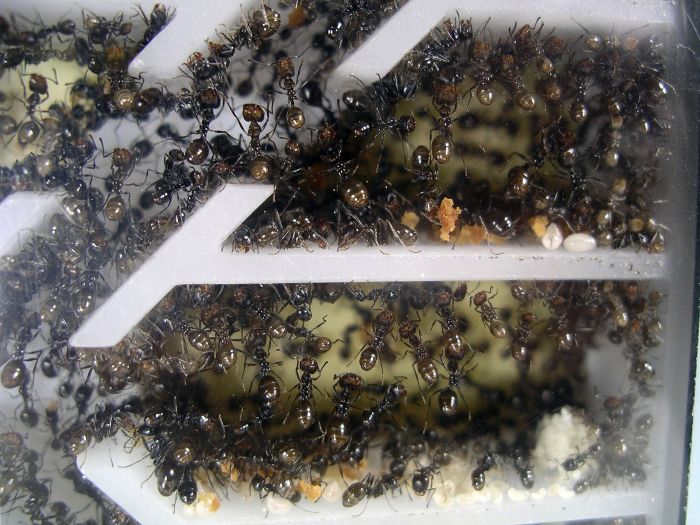
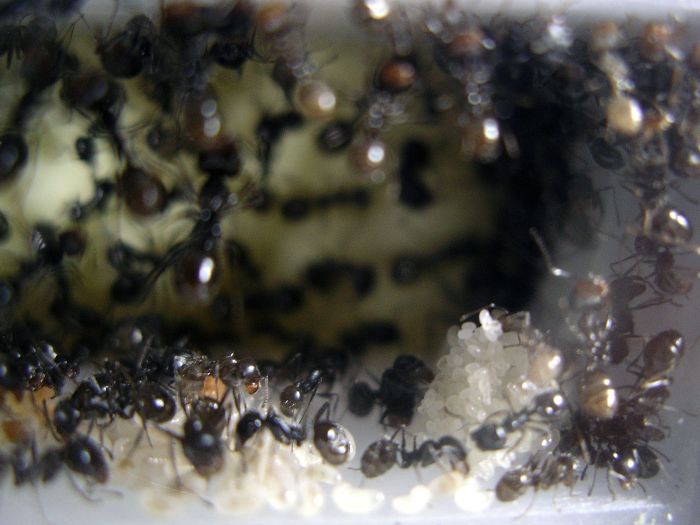
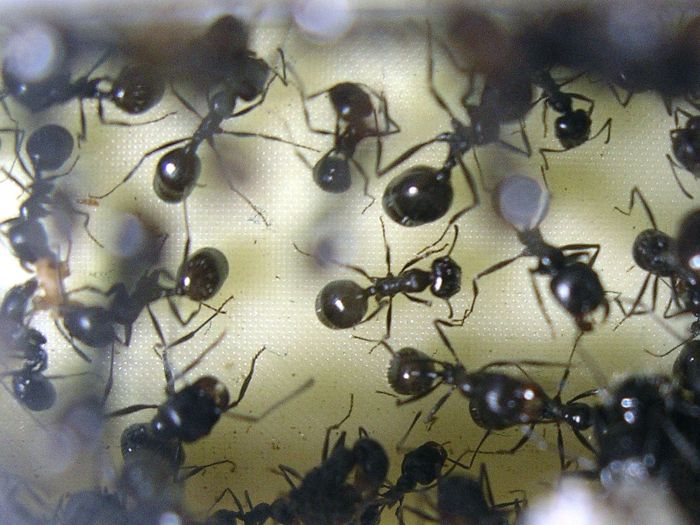
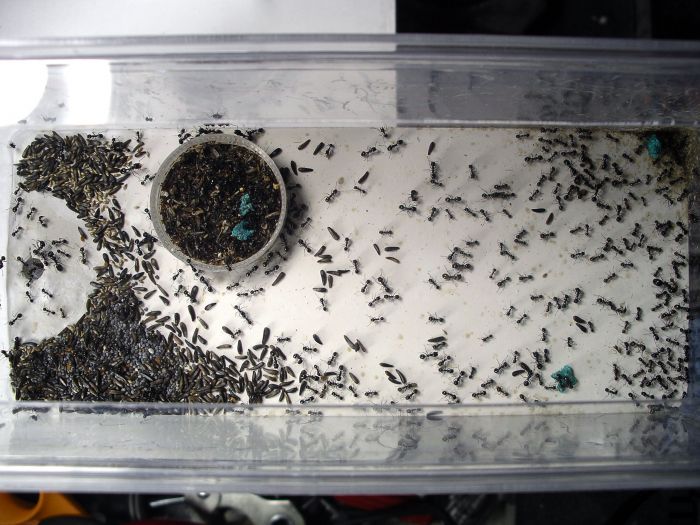
Awesome colony!
Hi Drew,
I'm sorry if you've stated this elsewhere, but could you link me to the exact BoxBox brand container you are using for the outworld? Much appreciated.
Edit: This one? http://www.container...0035409&N=80804
Edited by Miles, February 24 2015 - 4:56 PM.
That is the taller one I am using for the base container. The out world one is the larger of these.
http://www.container...0032168&N=80804
There are three heights.
Did you paint the nest portion? The only boxes like this are clear - at least the ones that I can find.
Yes, they are all clear. I painted that one.
Update 2-25-2015
I just found out five of the new queens have tons of tiny white mites stuck all over them. They're mostly on the bottom side of the gaster right where the petiole connects to it. I tried putting one queen in white vinegar, but I doubt this did anything to the mites. I have ordered some very expensive ultra-fine forceps that I had been wanting to buy for a while now. I just figured this would be a good time to get them. Hopefully I'll be able to pluck every one of these off the queens.
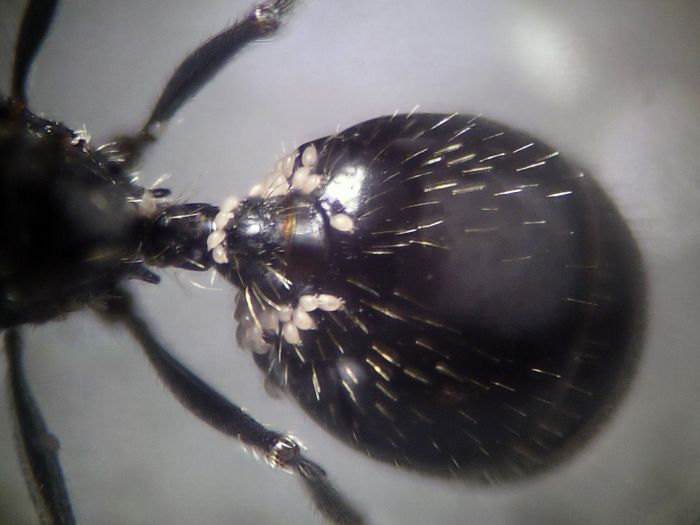
Update 3-21-2015
Yesterday while out anting, Chromerust found one more of these queens and gave it to me, putting my total at seven new queens for the season.
Update 3-27-2015
I managed to wipe the mites off one of the new queens. I started working on another, but didn't get them all yet. A brown liquid started coming out of its gaster somewhere. I'm not sure if I hurt it or what, but it seemed this liquid was coming out of the joints between its gastral terga, and possibly even other joints. I noticed that some of these mites are dead, and probably the ones that fall of the easiest. I was wondering what they would be eating if they were just phoretic mites. It seems to me they would eventually starve or dry out. Maybe that is what's happening; who knows... I'm still going to try to remove them all anyway.
Two of the mite-free queens now have workers.
As for my big colony, they are still doing well. They now have well over the 1500 workers I estimated they had in the last update. It also looks like they still haven't managed to dig through the nylon mesh in their nest.
I observed something interesting with the large colony. There's usually maybe around 200 or so workers in the out world either standing there or wandering around. A few days ago, most of the workers went down into the nest. For the first time since the colony has been this large, there were probably less than 50 workers outside of the nest. It was like this for about two days, and then suddenly there were TONS of workers outside in the out world streaming up the sides. There were inch-and-a-half-wide columns of them going up the sides of the out world, only to fall back down once reaching the top of course. In total, there were probably over 600 workers out there in the out world. Some of them were even starting to take brood out of the nest. It was like this for about two days, when I got suspicious. I checked the water, and the tank had gone completely dry! This was obviously what was causing this interesting sequence of activity. I quickly filled the tank back up, and within minutes, there were no more columns of them streaming up the sides, and most of them went back down into the nest. Pretty soon the bottom chambers were filled solid with workers, obviously drinking the water as it soaked into the sponge. Soon everything went back to normal with about 200 or so just hanging around in the out world.
This tells me something. I think they actually liked the nest much more once it started to dry out, but of course it was clear that once it had gone completely dry they decided they needed to quickly find some water or a new more humid place to nest. Now that I think about it, this doesn't surprise me at all. This nest right now is using a PVA sponge, which absorbs water so well that the entire thing is soaked. I had a feeling this would be a problem in a nest this small. Luckily, I'm actually planning to use ceramic tiles now anyways, so this won't be an issue.
Update 3-29-2015
All of the new queens are now completely mite-free. Using my extremely fine forceps, I wiped them all off. I also briefly held them under running water from the sink to help knock the mites off.
There is a total of six new colonies now, three of which have workers. One has six, one has seven and one has a total of 17 workers already.
That is a lot of care you put in, well done!
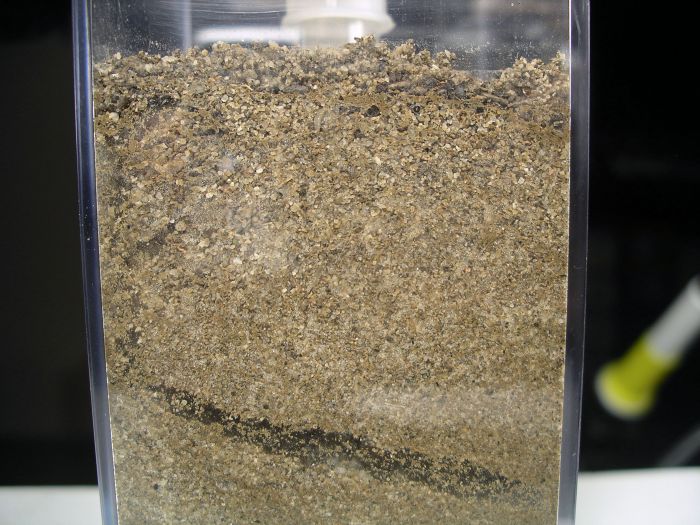
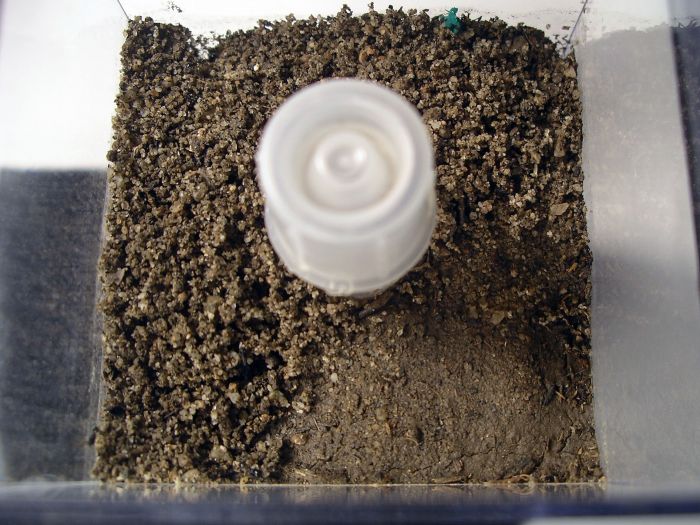
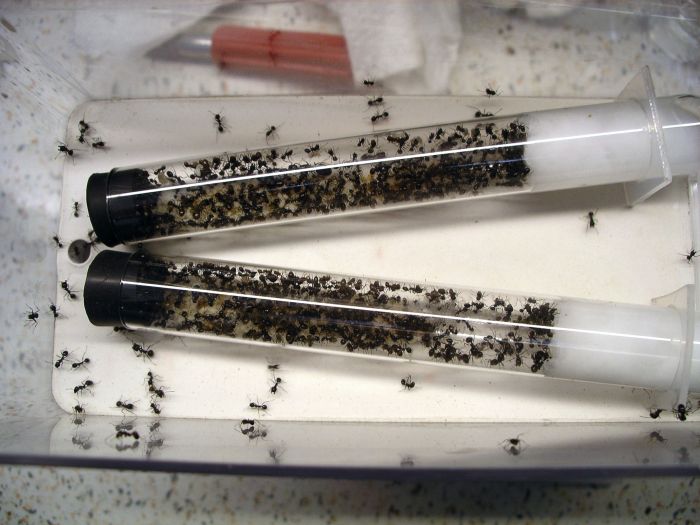
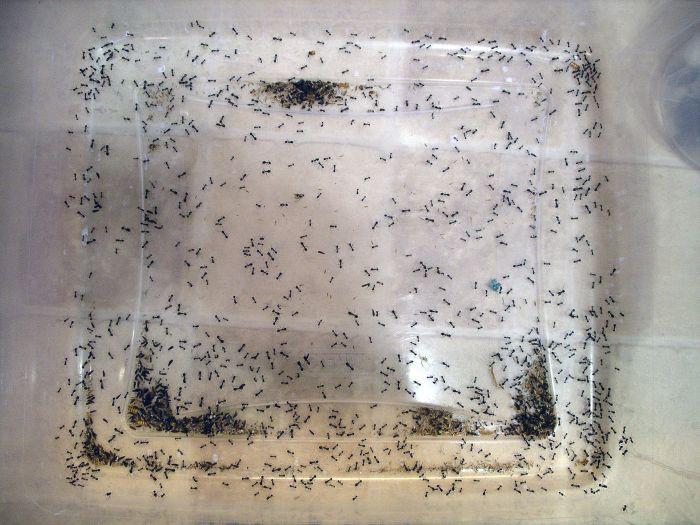
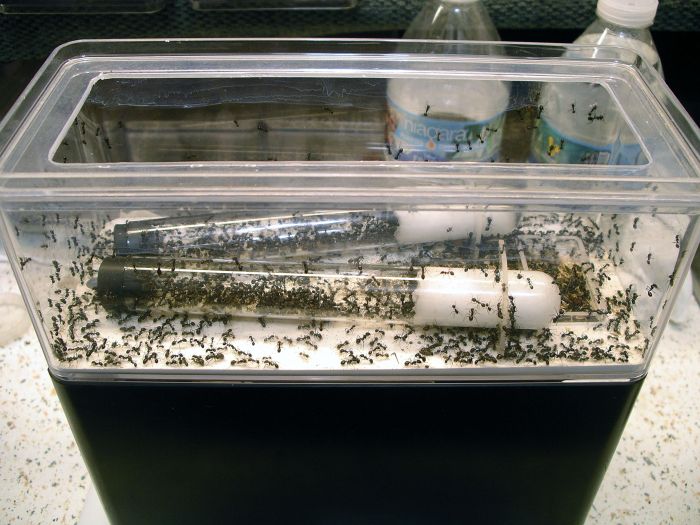
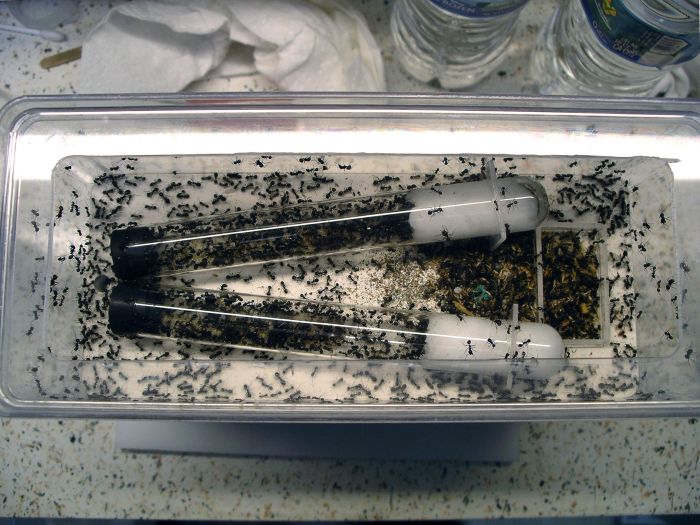
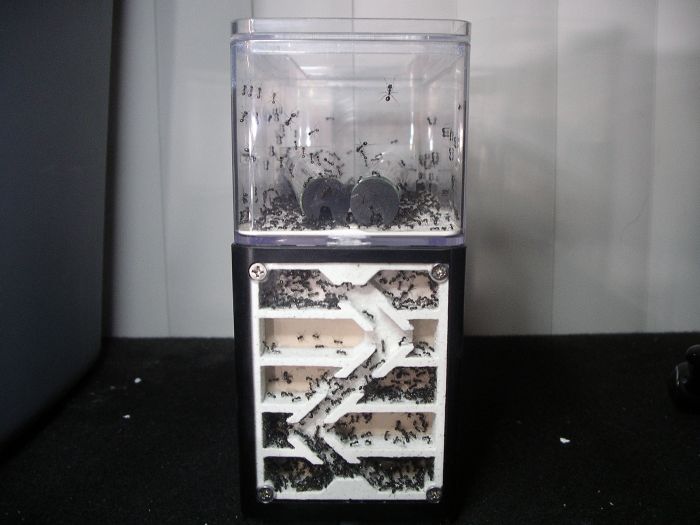
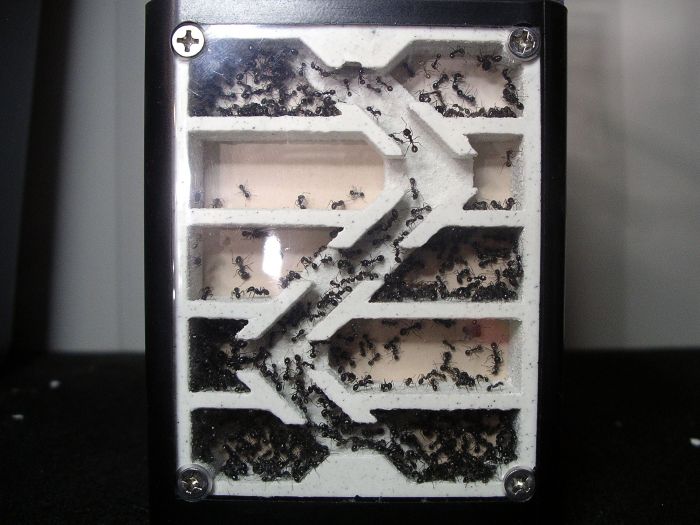
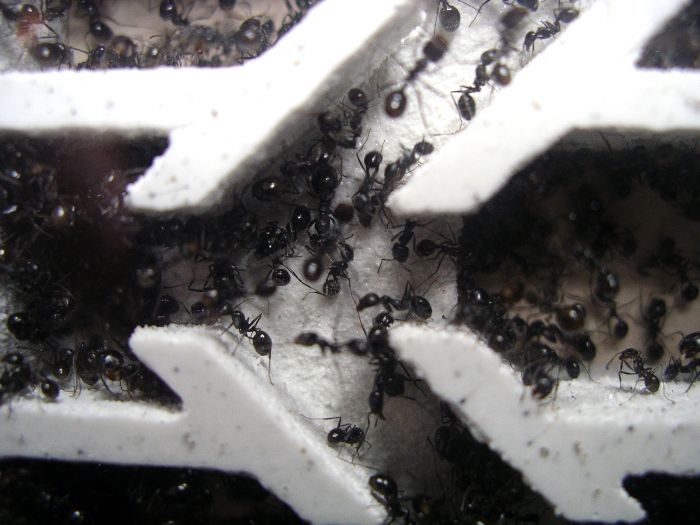
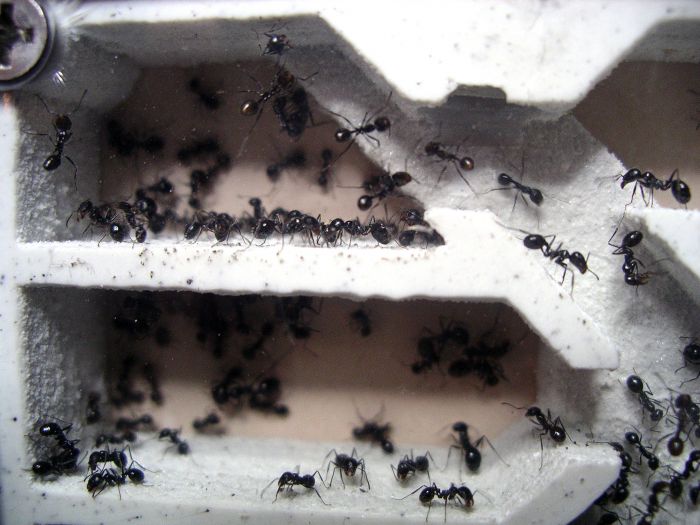
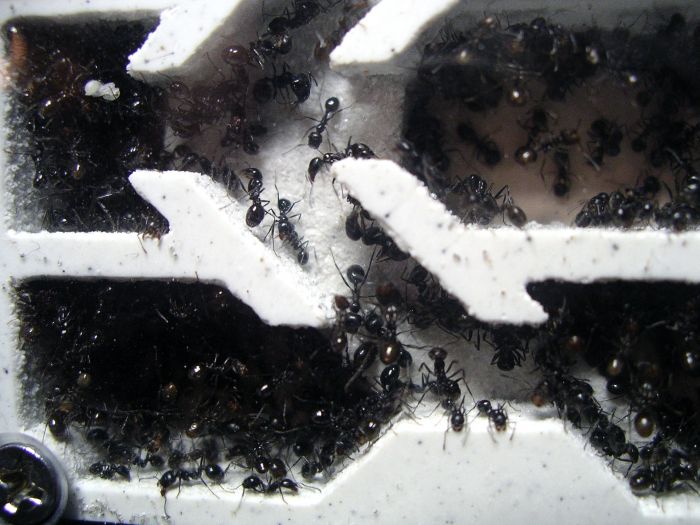
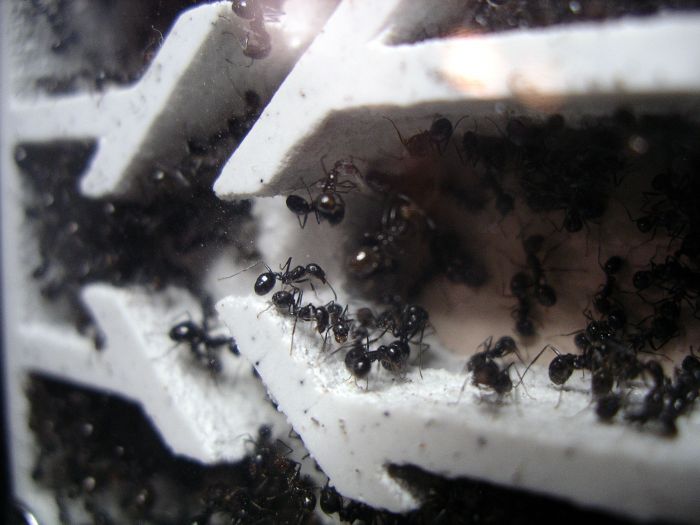
I am guessing 1600 ants. Do they accept multiple queens?
0 members, 2 guests, 0 anonymous users